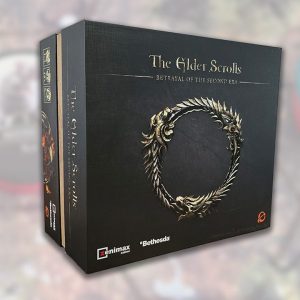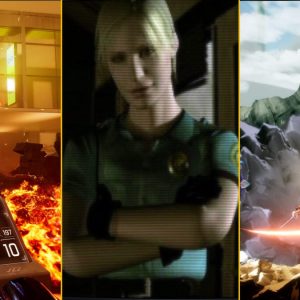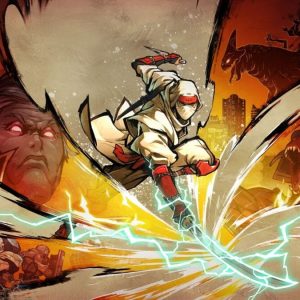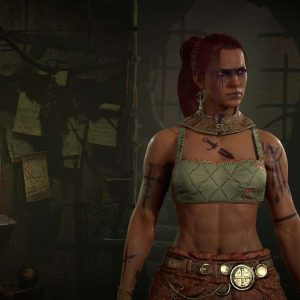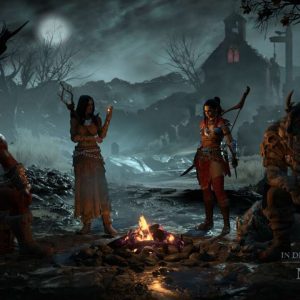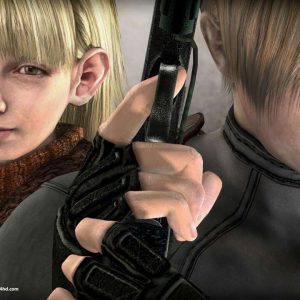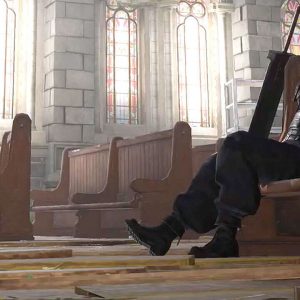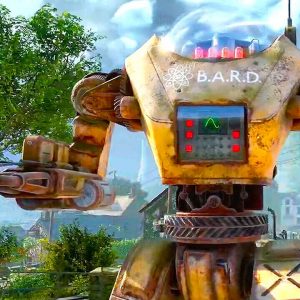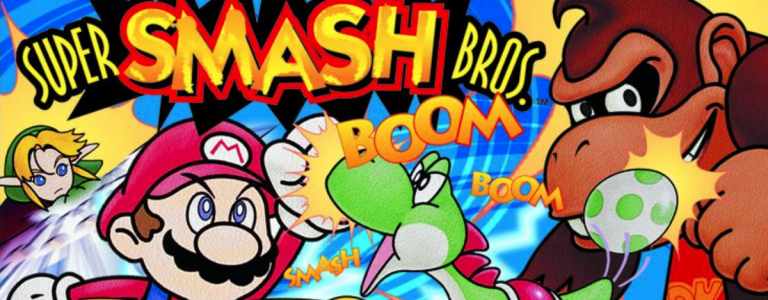When I hear the name “Elder Scrolls,” thoughts of exploration, grand quests, and a character that’s a blank slate come to mind. A toy box of potential and possibilities that I can just have fun in, whether I want to become the most powerful mage in the realm or the master thief with a tendency to steal all of the wheels of cheese in the world. Somehow, the madlads at Chip Theory Games, known for their staggering component quality and games like Too Many Bones, have managed to condense that sense of exploration, discovery, and player choice into a game that I find to be both one of the most approachable and daunting campaign board games I have ever played.
Predating the video games (all of the currently existing games take place during the Third Era with exception of Skyrim, which is during the Fourth), Elder Scrolls: Betrayal of the Second Era allows one to four players to take in the sights and uncover nefarious plots throughout three-act campaigns of the various realms of Tamriel. Whereas some games – let’s use Gloomhaven as an example – feature a single campaign that can take dozens, if not hundreds, of hours to complete, Chip Theory has designed Elder Scrolls to be a treasure chest that can provide dozens of smaller campaigns to explore.
In the base box, you have access to five different regional books – Skyrim, Blackmarsh, High Rock, Morrowind, and Cyrodil – referred to as Gazzetteers. These spiral-ringed notebooks contain all the cities and essential information you need to complete the main quests for that region.
When it comes to the different regions you can explore, while Chip Theory could have simply left them as just unique map layouts or quests to pick from, they have gone the extra mile and made each feel like its own unique character. Each one not only features its maps of unique locations and overland spots to explore, but it also comes with special mechanics that impact other elements of gameplay, including adding abilities to enemies you may encounter.
Blackmarsh, for example, features a shifting weather system that will hinder your movement. High Rock has civil unrest that may restrict what actions you can take in towns. These elements further add to the personality and immersion of this adaptation, which makes me appreciate the whole experience that much more.
A campaign is composed of three “sessions”, with the party following leads or helping out on a quest given to you by one of the game’s eight possible guilds, which, with the end of each session, further provides choices as to how you want it to continue next. Regardless of the quest you choose to tackle during a session, they will never last more than 12 (in-game) days, with each day providing a new activity to partake in, be it stopping by and resting at the nearby town to restock on items and learn new skills, delving into dungeons, or helping a passerby. And if you’re like me, who easily gets sidetracked in the video games with the occasional side quest, then you will be pleased to know that there is a large deck of side quests to take part in here too, including some hilarious and more outlandish ones like getting someone some home-cooked meatloaf. No, I’m not kidding.
A single campaign session usually took around 3-4 hours for my friends and me to get through, but this was cut down to around the 3-hour mark once we really had a grip on how Elder Scrolls and our characters worked. This means that it is entirely doable to comfortably complete a whole campaign over a weekend, or even just one day. This fact alone has made Elder Scrolls far more alluring to play, even if it isn’t exactly a small or quick game to set up. Granted, this time can, and will, fluctuate depending on what side quests you decide to tackle, how you plan out your days, and what enemies you face off against.
My favorite part of the Elder Scrolls video games is the seemingly bottomless rabbit hole that is the character creation system. I’m happy to report this has been carried over into the board game. All of the series’ races, presented on large cards you keep next to your player board, are here, with each option having a different allocation of base stats and a special ability.
This is only the start. You also pick from different classes and weapon styles to further customize your avatar, all of which add different dice and actions you can take during the game. And for folks who prefer a more support role, there are options for you too, like being a Pilgrim that specializes in letting your party take free actions while in town, or swapping out treasures, or taking the Speech talent that can help you talk your way out of fights, removing enemies from the board. I’m not going to math it out, but between all of the available options to pick from, there are A LOT of permutations of characters you can play as.
The various stats and skills you decide on are all slotted into your player board into four lines, with two slots open on opposite sides from one another, with six spaces between. You only have access to these six spaces to improve either of the skills that are across from one another, meaning that to improve one, you do so at the possible expense of the other. I love how this makes even leveling up or picking your initial skills so much more of a strategic exercise with consequence, but it also provides even more outlets to mess around in subsequent campaign play-throughs.
In fact, making characters feels a bit like a game in itself, and I will admit to busting open my game box with the sole focus of making a character. And all of this is just the start, as you also collect equipment and other items during your adventure that add additional bonuses to your character, all of which result in Elder Scrolls being a package that will delight fans who enjoy min-maxing their characters in RPGs.
But, what good would a super cool character be if there was nothing cool to wack with them? For fans of Chip Theory’s Too Many Bones, the combat will feel similar in Elder Scrolls. Each attack you use has specific dice associated with it, and its relevant stat – stamina for physical attacks or magicka for spells – and your level in that ability dictates how many dice you can roll. Once a die is rolled, it moves to your cooldown area, making it unavailable to use again until it has returned to your active player board. Some skills even provide bonuses while in your cooldown row, but this row can also be gunked up with fatigue, which makes it take longer for dice to return and be usable again.
Combat takes place on maps made up from neoprene hexagonal tiles that, depending on the encounter type, are either static or expanded and revealed as you fight, with both enemies and players being represented by Chip Theory’s signature poker chips. Your typical enemies are typically picked by plucking blindly from a bag composed of monster chips, each with an associated level and potentially unique traits, from a general pool and regional-specific ones. This sort of “luck of the draw” approach, along with the inherent randomness of rolling dice for attacks, makes it so encounters can swing wildly in terms of challenge or how long they take to complete, but even the most challenging skirmishes felt more like exciting puzzles to work out than chores to suffer through.
If you are thinking this all sounds overwhelming, then you aren’t alone. With its nearly 100-page rule book, a standalone tutorial rulebook, multiple sheets devoted to keywords defining monster traits, and more, it can be a lot to take in and process. Just talking about it is making my head spin a bit, and there are more mechanics and other minutiae that I haven’t even touched on.
Thankfully, Chip Theory Games recognizes the game’s considerable demands and offers a helpful hand-holding tutorial (a jailbreak in typical Elder Scrolls fashion). I also highly recommend checking out the free digital tutorial on Dized. It does a solid job guiding you step-by-step – its how I learned the game. Thankfully, the moment-to-moment gameplay is pretty straightforward; it is just getting to that point that is the biggest hurdle.
All of that content results in a massive box weighing in around the 20-pound mark (about 10kg for the rest of the world). A significant factor in this game’s weight, which is on par with a small dog (my Shiba Inu is 20 pounds), is thanks to the component type and materials that Chip Theory is known for – plastic, neoprene, and more plastic. Everything crammed into a box could be dumped into a bathtub with little repercussion (please don’t try this), with the exception of the rulebooks, which I am pretty sure are just plastic-coated paper and may not be waterproof. The quality is spectacular, but the pain in my back from hefting the monster onto my gameshelf is less so.
For all that Elder Scrolls has going for it, this is a game for people who know they like board games and have a good deal of experience under their belts playing them, especially complex ones. While the smaller campaign and smart session break-up make this an approachable campaign game from a time-investment standpoint, *waves hands* EVERYTHING else makes this far from a great “players first campaign game” option. Folks who love video games should not immediately jump into Betrayal of the Second Era unless they are prepared and willing to tackle the beast of a learning curve this game has. However, as long as you know what you are getting into and are willing to stick through it, Betrayal of the Second Era is worth it and then some.
Elder Scrolls: Betrayal of the Second Era is a heavy game (both mechanically and physically) with an equally hefty $225 price tag. But in return, you get one of the richest tabletop video game adaptations as well as one of the most replayable campaign games on the market. The fact that I can enjoy a full story over the course of a weekend, or even a day, shoots this high on my list for game days with friends who I know are into more complex games.
Chip Theory looks to further expand on the system they have built too, with one expansion, Valenwood, already available and an upcoming crowdfunding campaign, “The Heroes of Tamriel”, promising five new expansions “and more surprises” that launches in October. Elder Scrolls: Betrayal of the Second Era has quickly become one of my favorite campaign games in my collection, and I can’t wait to see what else Chip Theory Games has in store for this mysterious era of Tamriel’s history.
